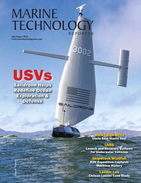Deep-Sea Mining Test Caused Distant Sediment Change
Independent researchers from the MiningImpact project and the German Federal Institute for Geosciences and Natural Resources (BGR) monitored the test of an industrial pre-prototype nodule collector vehicle in the Clarion-Clipperton Zone in the eastern Pacific and found that the spread of the suspended sediment plumes could reach 4.5 kilometers (2.8 miles).
The project is coordinated by the GEOMAR Helmholtz Centre for Ocean Research Kiel, has been investigating the potential environmental impacts of deep-sea mining since 2015. Previous analyses of decade-old disturbance traces in the Clarion-Clipperton Zone and the Peru Basin indicate that mining will cause long-term damage: biodiversity and essential ecosystem functions will be affected for many centuries.
A major but poorly understood risk is the spread of suspended sediment plumes generated during mining operations. To better understand this process, the scientists closely monitored the test of a remotely operated pre-prototype nodule collector developed by the Belgian ISA contractor Global Sea Mineral Resources. The study, now published in Nature Communications, provides the first detailed data on the far-field spatial footprint of mining-induced plume dispersion and redeposition beyond the mining area itself.
“While the main sediment fraction resettles within a few hundred meters from the source, we could detect small changes in sediment concentration up to 4.5 kilometers away” says lead author Iason-Zois Gazis, a researcher in the DeepSea Monitoring Group at GEOMAR.
On 19 April 2021, a nodule collector was deployed for 41 hours at a depth of 4,500 meters. During this time, the vehicle travelled approximately 20 kilometers and covered an area of 34,000 square meters (roughly the size of five football pitches). The sediment plume generated by the vehicle was measured using numerous calibrated sensors mounted on stationary platforms placed on the seafloor, as well as remotely operated and autonomous underwater vehicles.
The study found that a flow of dense suspended particles (a gravity current) developed behind the collector, travelling downslope through steeper sections of the seabed for up to 500 meters. Subsequently, the further spread of the sediment plume was driven by natural near-bottom currents.
Near the mining site, sediment concentrations were up to 10,000 times higher than under natural conditions, and returned to normal levels after 14 hours. Most suspended particles remained within 5 meters above the seafloor, resettling relatively quickly aided by particle flocculation. A low-concentration plume of fine sediment particles left the monitored area at 4.5 kilometers distance.
Using high-resolution 3D mapping of the seafloor, the researchers mapped the mining imprints with millimeter-resolution and estimated the amount of sediment removed in the mining area and subsequently redeposited on the seabed. In the mined areas, nodules were removed with at least the top five centimeters of the seafloor. Meanwhile, the redeposited layer reached a thickness of about three centimeters, completely covering the nodule habitat in the close vicinity (up to ~100m distance), and thinning out with increasing distance from the mining area.
MiningImpact researchers are continuing their analysis of the environmental impacts of seabed mining.

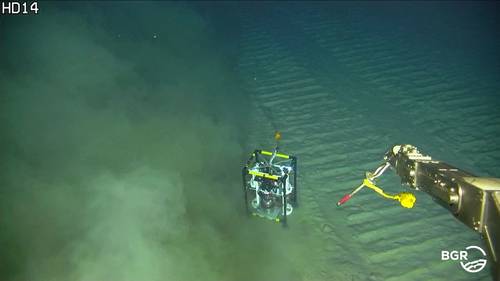
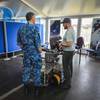

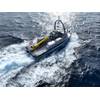
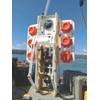
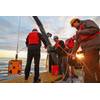
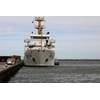





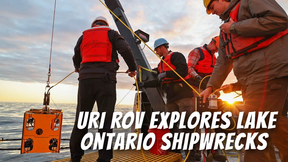

 February 2025
February 2025


